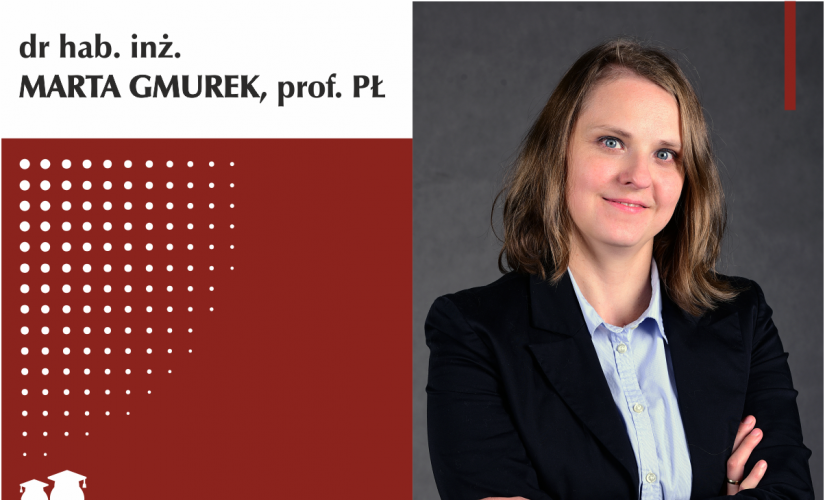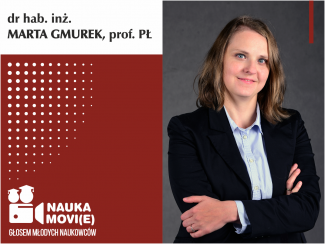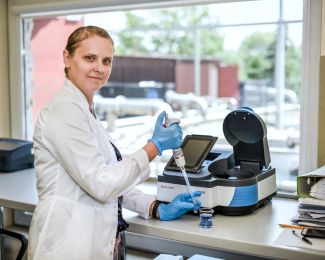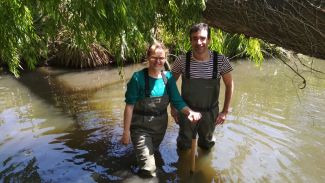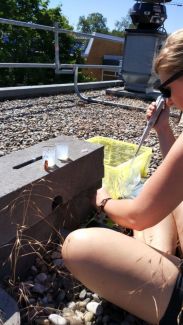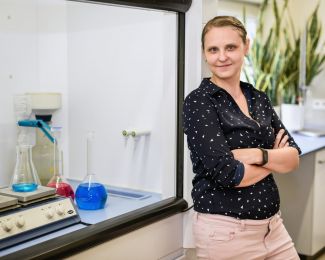Praca naukowców jest pasjonująca, a jej efekty w postaci badań podnoszących jakość życia inspirują studentów decydujących się na karierę naukową. O swoich badaniach prowadzonych w Politechnice Łódzkiej będą opowiadać bohaterowie cyklu „Nauka movi(e) głosem młodych naukowców". Pierwszą bohaterką jest dr hab. inż. Marta Gmurek, prof. PŁ z Wydziału Inżynierii Procesowej i Ochrony Środowiska.
Dla badaczki ikoną kobiety naukowca pozostaje Maria Skłodowska-Curie. Dr hab. inż. Marta Gmurek, prof. PŁ już w szkole średniej wiedziała, że chce mieć wpływ na środowisko, pracując w laboratorium przy oczyszczaniu wody. Skończyła inżynierię środowiska, a potem doktoryzowała się na PŁ. Zaledwie w 4 lata po doktoracie uzyskała habilitację w dyscyplinie inżynieria środowiska.
Mniej konsumpcjonizmu, mniej plastiku, mniej chemii – to Pani apel. Które wyzwania związane z ochroną środowiska są w skali globalnej największe?
Jest wiele takich problemów, biorąc jednak pod uwagę moje zainteresowania naukowe, uważam, iż tematy związane z zanieczyszczeniami wody przez ksenobiotyki i mikroplastiki czy występowanie antybiotyków, bakterii antybiotykoopornych oraz genów antybiotykoodporności powinny być priorytetem.
Co jest celem Pani badań?
Moje badania skupiają się na procesach, które dostarczą wielu istotnych informacji na temat mechanizmów samooczyszczania się wód w procesach fotochemicznych z udziałem promieniowania widzialnego. Zajmuję się szeroką analizą wpływu różnorodnych czynników fizycznych i chemicznych na przebiegAnaliza spektrofotometryczna, Laboratorium Biliński Factory of colour, Badania nad odbarwianiem ścieków włókienniczych, Konstantynów Łódzki procesu fotodegradacji ksenobiotyków (farmaceutyków, pestycydów, czy konserwantów stosowanych zarówno w kosmetykach, żywności itp. – parabenów). Badania prowadziłam zarówno w układach modelowych, jak i rzeczywistych. To pozwala na porównanie przebiegu reakcji w warunkach laboratoryjnych z procesami zachodzącymi w warunkach naturalnych, w obecności substancji, które mogą zakłócać fotodegradację substratów, współzawodnicząc o dostęp do światła, bądź przyspieszać ją w wyniku synergistycznego działania kilku fotoprocesów.
Dlaczego tak ważne jest opracowanie efektywnej metody usuwania wszystkich szkodliwych substancji ze ścieków?
Niestety, związki wchodzące w skład szerokiej grupy ksenobiotyków są wykorzystywane w znaczących ilościach w różnych gałęziach przemysłu m.in.: w rolnictwie, przemyśle petrochemicznym, farmaceutycznym, kosmetycznym czy hodowli zwierząt. Biorąc pod uwagę cykl produktu, bardzo często związki te w niezmetabolizowanej formie, trafiają do ścieków, skąd przedostają się przede wszystkim do rezerwuarów wodnych, np. stosowane pestycydy w wyniku spływów z terenów rolniczych przenikają do wód powierzchniowych. Stamtąd natomiast trafiają do zakładów stacji uzdatniania wody, które jednak nie są efektywne w unieszkodliwianiu tych związków.
Jakie to przynosi skutki?
W konsekwencji substancje niebezpieczne dla środowiska są wykrywalne w wodzie pitnej, z której mogą być wchłaniane do organizmu. Ze względu na charakteryzujące ksenobiotyki właściwości negatywnie oddziałujące na populacje ludzi i zwierząt, poszukuje się metody ich degradacji, albowiem przyroda również nie radzi sobie sama z unieszkodliwianiem toksyn na drodze biologicznej. Procesy zaawansowanego utleniania wykorzystywane są już od wielu lat w stacjach uzdatniania wody (oparte na UV) czy podczas ozonowania np. wody basenowej.
Niemniej jednak, wobec ogromnych ilości ksenobiotyków zużywanych i emitowanych do środowiska każdego roku oraz ze względu na udowodnione szkodliwe działanie środowiskowe i zdrowotne substancji będących przedmiotem mojego zainteresowania, poznanie możliwych dróg ich fototransformacji/transformacji w zbiornikach wodnych ma duże znaczenie dla ochrony zdrowia.
Te badania mają interdyscyplinarny charakter.
W związku z nawiązaną współpracą z przemysłem włókienniczym i dzięki inicjatywom podejmowanym z dr inż. Lucyną Bilińską, udało się również przeprowadzić wnikliwe badania nad zastosowaniem procesów opartych na hybrydowym działaniu ozonowania z procesami katalitycznymi i elektrochemicznymi. Ostatnimi czasy dużo uwagi poświęcam również badaniom nad zastosowaniem reaktywnych form tlenu w celu dezaktywacji bakterii i wirusów oraz genów antybiotykoopornych.
Czy analiza ścieków może coś powiedzieć o społeczeństwie?
Zdecydowanie tak. Są zespoły badawcze skupiające się na analizie np. zużycia antydepresantów czy środków odurzających na danym terenie. Z analizy od razu można wyczytać sezonowość ich stosowania. W ostatnim czasie w Szwecji wykorzystuje się monitoring środowiskowy w celu analizy występowania w ściekach komunalnych wirusa Covid-19, w ten sposób wykrywając ogniska epidemiczne. Zatem analiza jakościowa jak i ilościowa ścieków bywa bardzo interesująca. Badania pokazują, iż ilość farmaceutyków w ściekach jest zatrważająca. Niestety przez brak systemowych rozwiązań, nie ma konieczności oznaczania czy nawet badania stężeń niektórych substancji po procesach oczyszczania ścieków. Zatem z oczyszczalni wraz z „oczyszczonymi ściekami” wypływają niezanalizowane ilościowo czy nawet czasami jakościowo substancje szkodliwe dla środowiska.
Ma Pani duże doświadczenie we współpracy międzynarodowej, a niebawem rozpoczyna Pani kolejny zagraniczny staż. Na czym się Pani tam skupi?
Przez ostatnich kilka lat odbyłam wiele staży zagranicznych. ale muszę przyznać, że ten który właśnie rozpocznę na początku przyszłego roku, jest moim największym sukcesem. To bardzo prestiżowe międzynarodowe Stypendium Humboldt Research Fellowship For Postdoctoral Researchers finansowane przez Alexander von Humboldt Foundation. Przez rok na Karlsruhe Institute of Technology będzie mi dane realizować projekt skupiający się na użyciu promieniowania słonecznego w procesach fotokatalitycznych do degradacji antybiotyków oraz dezaktywacji bakterii antybiotykoopornych oraz genów antybiotykoodporności. To kontynuacja moich dotychczasowych badań.
Dlaczego warto być naukowcem?
Po pierwsze - bo to bardzo ciekawa praca, która mobilizuje do ciągłego rozwoju, zdobywania wiedzy, poszerzania horyzontów. Ale także do poznania niesamowitych ludzi z różnych stron świata.
O konsekwencjach, jakie dla społeczeństwa przynosi zanieczyszczenie środowiska dr hab. inż Marta Gmurek, prof. PŁ pisze również na blogu naukowców PŁ.

